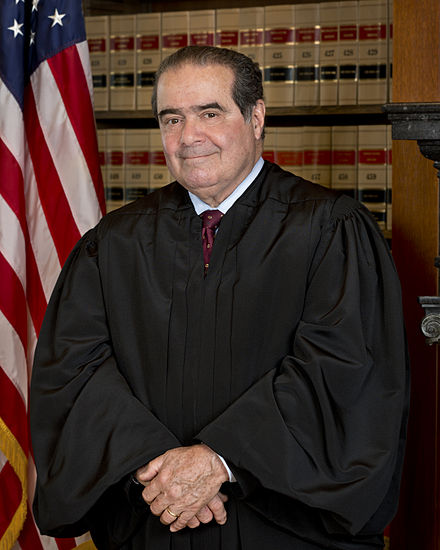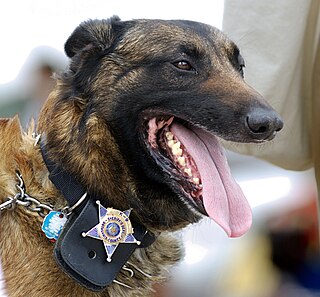| Prado Navarette v. California | |
|---|---|
 | |
| Argued January 21, 2014 Decided April 22, 2014 | |
| Full case name | Lorenzo Prado Navarette and Jose Prado Navarette, Petitioners v. California |
| Docket nos. | Expression error: Unrecognized punctuation character "–"./12–9490-12–9490.htmExpression error: Unrecognized punctuation character "–". 12–9490 |
| Citations | 572 U.S. ___ ( more ) 134 S. Ct. 1683; 188 L. Ed. 2d 680; 2014 U.S. LEXIS 2930; 82 U.S.L.W. 4282; 24 Fla. L. Weekly Fed. S 690; 2014 WL 1577513 |
| Prior history | On Writ of Certiorari to the Court of Appeal of California, First Appellate District, People v. Navarette, 2012 Cal. App. Unpub. LEXIS 7415 (Cal. Ct. App., Oct. 12, 2012), cert. denied People v. Navarette (Lorenzo Prado), 2013 Cal. LEXIS 141 (Cal., Jan. 3, 2013) |
| Holding | |
| When acting upon information provided by an anonymous tip, police officers need not personally verify the existence of ongoing criminal activity. | |
| Court membership | |
| |
| Case opinions | |
| Majority | Thomas, joined by Roberts, Kennedy, Breyer, Alito |
| Dissent | Scalia, joined by Ginsburg, Sotomayor, Kagan |
| Laws applied | |
| U.S. Const. amend. IV | |
Prado Navarette v. California, 572 U.S. 393 (2014), was a case in which the United States Supreme Court clarified when police officers may make arrests or conduct temporary detentions based on information provided by anonymous tips. [1] In 2008, police in California received a 911 call that a pickup truck was driving recklessly along a rural highway. Officers spotted a truck matching the description provided in the 911 call and followed the truck for five minutes, but did not observe any suspicious behavior. Nevertheless, officers conducted a traffic stop and discovered 30 pounds (14 kg) of marijuana in the truck. At trial, the occupants of the car argued that the traffic stop violated the Fourth Amendment of the United States Constitution, because the tip was unreliable, and officers did not personally observe criminal activity. Writing for a majority of the Court, Justice Clarence Thomas held that the 911 call was reliable, and that officers need not personally observe criminal activity when acting upon information provided by an anonymous 911 call.

The Supreme Court of the United States (SCOTUS) is the highest court in the federal judiciary of the United States. Established pursuant to Article III of the U.S. Constitution in 1789, it has original jurisdiction over a narrow range of cases, including suits between two or more states and those involving ambassadors. It also has ultimate appellate jurisdiction over all federal court and state court cases that involve a point of federal constitutional or statutory law. The Court has the power of judicial review, the ability to invalidate a statute for violating a provision of the Constitution or an executive act for being unlawful. However, it may act only within the context of a case in an area of law over which it has jurisdiction. The court may decide cases having political overtones, but it has ruled that it does not have power to decide nonjusticiable political questions.

An arrest is the act of apprehending a person and taking them into custody, usually because they have been suspected of committing or planning a crime. After the person is taken into custody, they can be questioned further and/or charged. An arrest is a procedure in a criminal justice system.
A Terry stop in the United States allows the police to briefly detain a person based on reasonable suspicion of involvement in criminal activity. Reasonable suspicion is a lower standard than probable cause which is needed for arrest. When police stop and search a pedestrian, this is commonly known as a stop and frisk. When police stop an automobile, this is known as a traffic stop. If the police stop a motor vehicle on minor infringements in order to investigate other suspected criminal activity, this is known as a pretextual stop. Additional rules apply to stops that occur on a bus.
Contents
- Background
- Fourth Amendment guidelines for traffic stops
- Fourth Amendment searches and seizures based on anonymous tips
- Arrest and Trial of Lorenzo and Jose Prado Navarette
- Opinion of the Court
- Dissenting opinion of Justice Scalia
- Subsequent developments
- Analysis and commentary
- Immediate reactions
- Scholarly analysis
- See also
- Notes
- References
- External links
Justice Antonin Scalia wrote a "scathing" dissenting opinion, in which he argued that the tip was unreliable, and that the majority's opinion threatened the freedom and liberty of all citizens. [2] Likewise, many commentators have noted Navarette represented a departure from earlier precedent, and that the opinion opened the door for expansive new police powers. [3] Some commentators have also noted that the case leaves open several important questions, including the unanswered question of whether anonymous reports of extremely dangerous behavior require fewer indicia of reliability before police may act upon those reports. [4] Other scholars have argued it was highly unlikely that Lorenzo and Jose Prado Navarette were actually driving under the influence of drugs or alcohol when they were stopped by police. [5]

Antonin Gregory Scalia was an Associate Justice of the Supreme Court of the United States from 1986 until his death in 2016. Appointed to the Court by President Ronald Reagan in 1986, Scalia was described as the intellectual anchor for the originalist and textualist position in the Court's conservative wing.
A dissenting opinion is an opinion in a legal case in certain legal systems written by one or more judges expressing disagreement with the majority opinion of the court which gives rise to its judgment. When not necessarily referring to a legal decision, this can also be referred to as a minority report.






